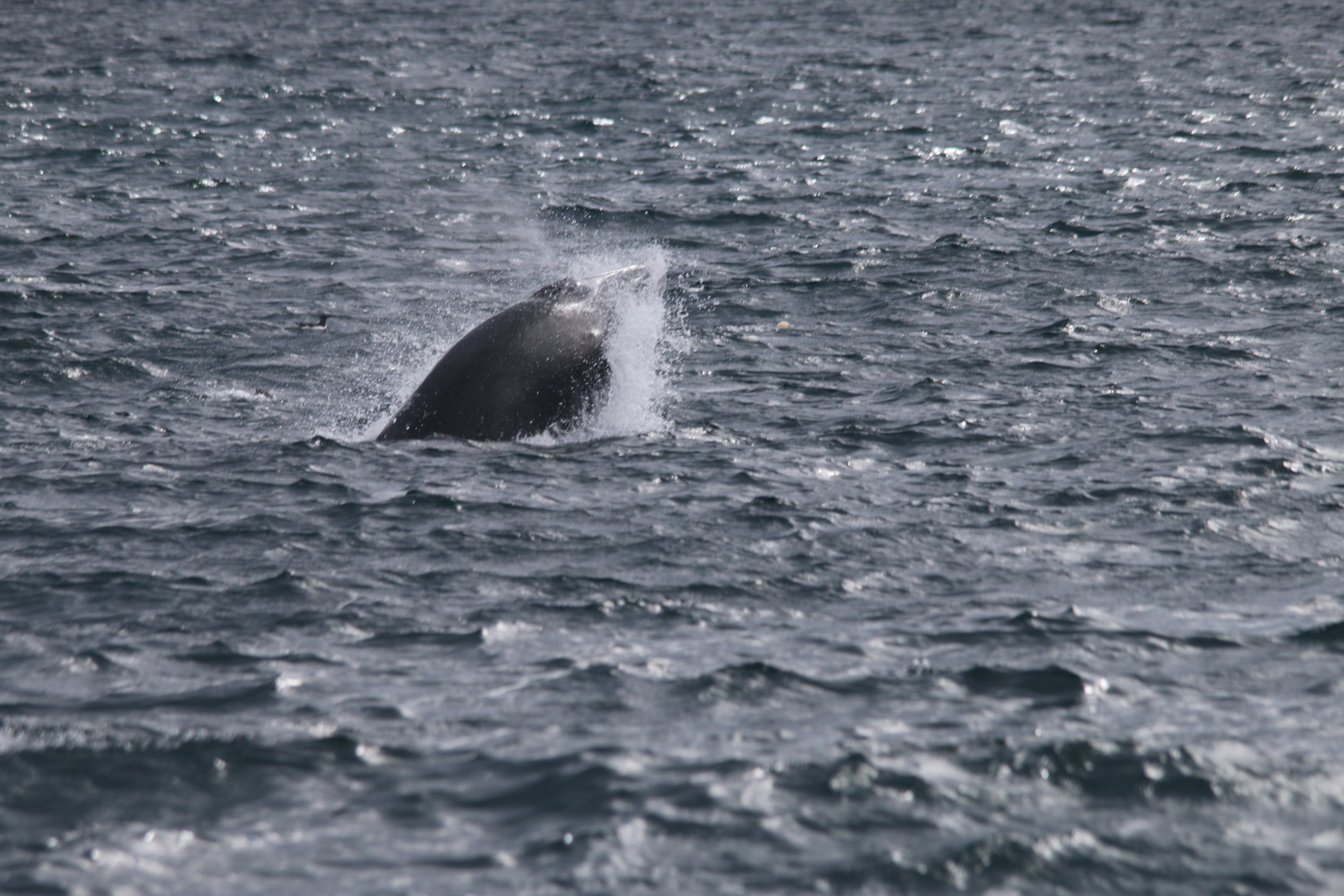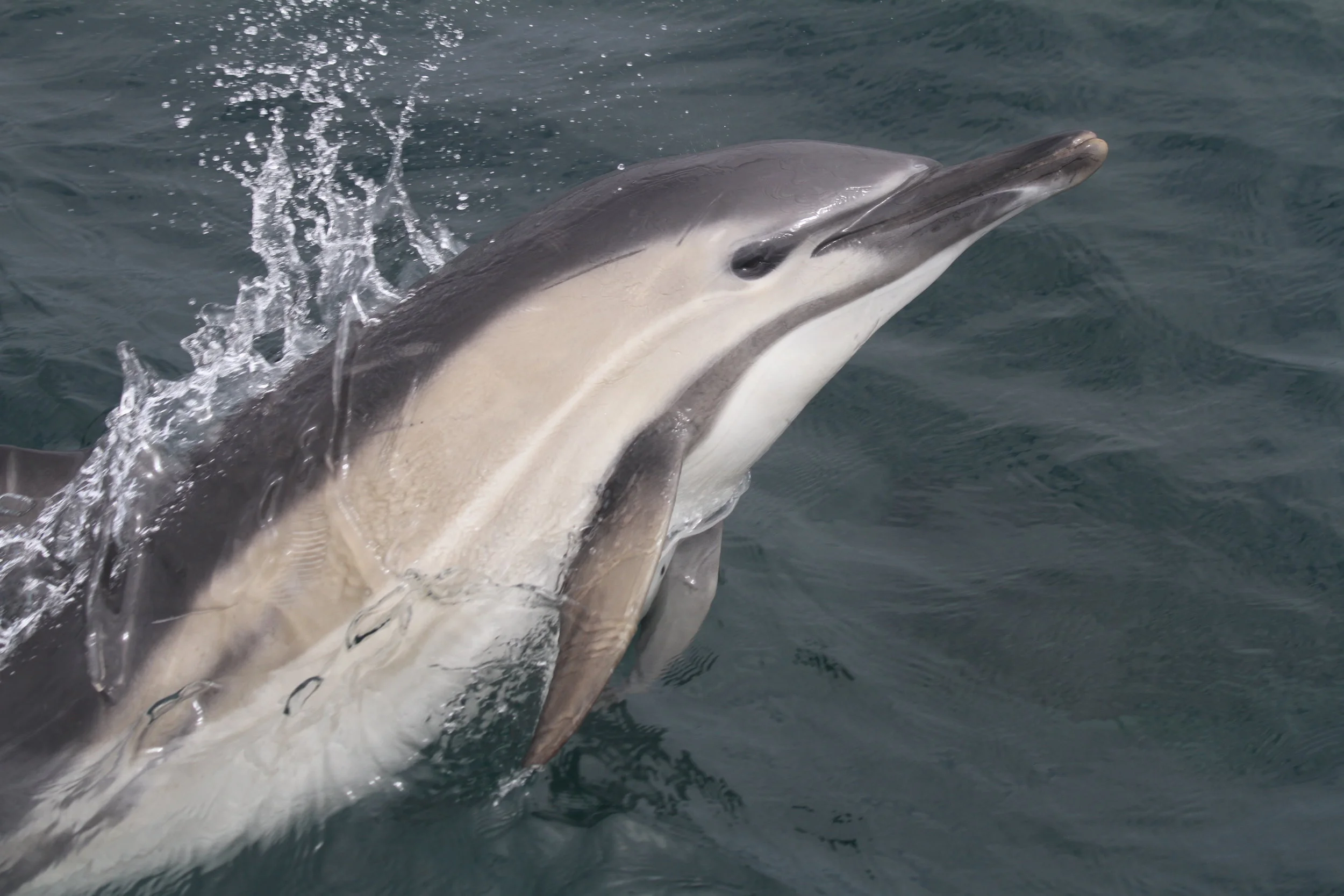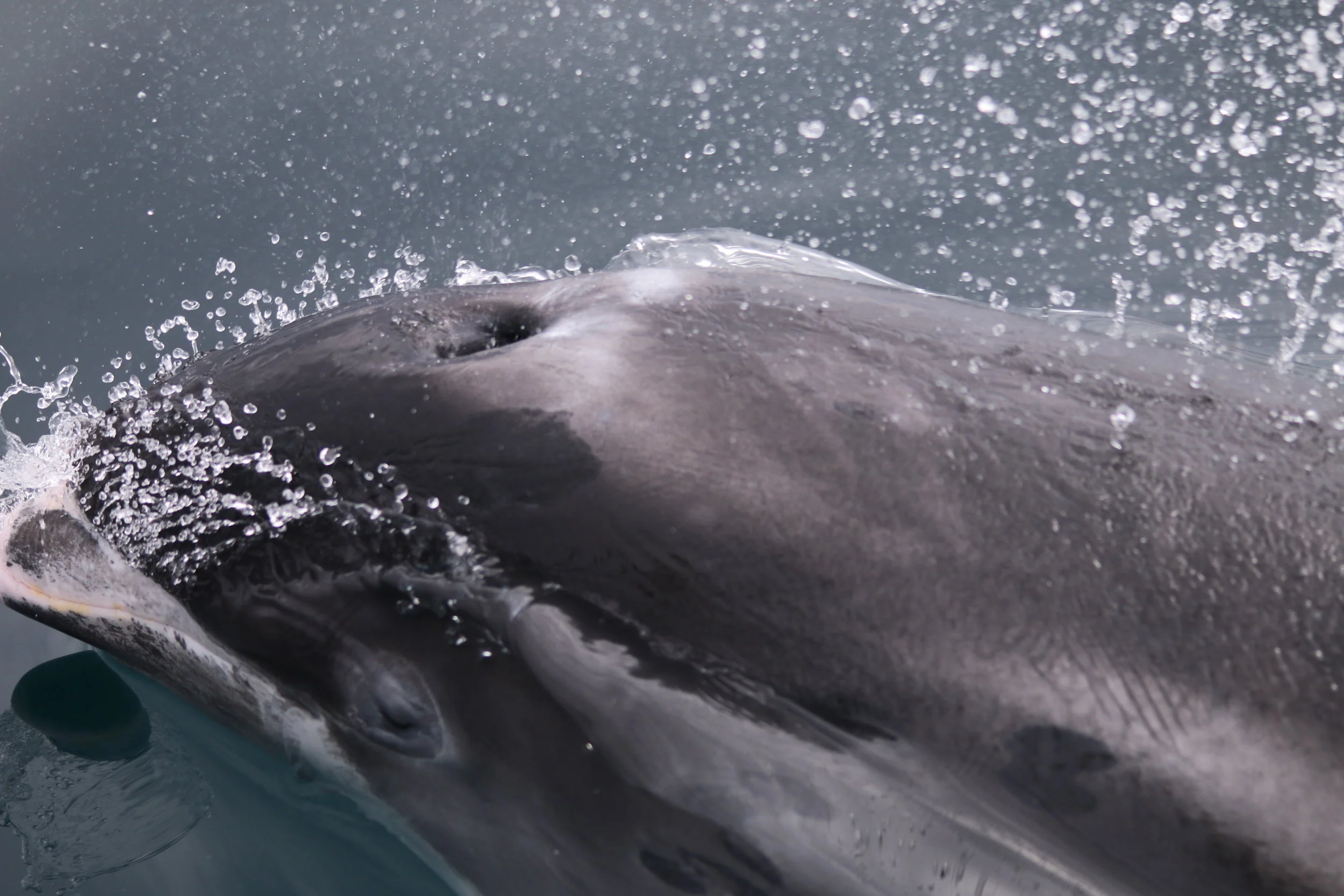Silurian Survey Round Up: April-June
The team of citizen scientists on board Silurian taking photographs of the wildlife!
It has been an incredibly successful first half of the survey season on board Silurian, with fair weather conditions giving us the opportunity to survey areas that can be harder to reach. So far, six surveys have taken place; including a survey focused on the multinational military joint warrior exercise and a survey with participants from St Andrews university. We have covered an impressive 1843 nautical miles (3413.3 km), collecting visual and acoustic data through our Cetacean Research Programme
We have had incredible sightings on all of our surveys, with 124 more sightings than this time last year. In total we recorded 575 sightings of marine megafauna will 1227 individual animals sighted. Nine marine mammal species were recorded including 281 sightings of cetacean species and 210 sightings of seals one basking shark sighting.
One of the most memorable sightings happened on the last survey (HWDT05) when we encountered a pod of nine killer whales off the coast of Barra. Unperturbed by the boat, we were able to stay with pod for half an hour, obtaining hundreds of photo ID images. When organising these images it was clear that these individuals were not part of the west coast community. The images have subsequently been shared with experts of other killer whale communities, to see if we can conclude which communities these animals are from.
Favourable conditions for this reporting period has also given us the opportunity to survey areas that are often out of our reach. Two surveys have managed to assess the waters to the west of the Outer Hebrides, with one memorable day spent travelling west to the Flannan Isles. During this particular survey, we had an increase in sightings of white-beaked dolphins, encountering 161 animals, 87 more individuals than the whole of last year.
HWDT02 (15th – 21st April)
Our first survey departed from Tobermory and covered 175 nm, surveying the waters around the small Isles. Read the full survey summary here https://hwdt.org/news/2018/4/25/first-season-of-hwdt-kicks-off-to-a-successful-start
Track lines for HWDT 02
Spring Joint Warrior Survey (24th April– 2nd May)
Our second monitoring survey of the season was scheduled to coincide with the biannual Joint Warrior exercise to help understand the impact that these activities may have on cetaceans across the Hebrides. We covered 318 nm and recorded over 41 hours of acoustic data, with thirty-five recordings of military sonar made. Read more about the survey here https://hwdt.org/news/2018/5/3/joint-warrior-survey-summary
Track lines for the spring Joint Warrior survey
HWDT 03 (5th – 11th May)
Survey number three covered 205 nautical miles, with citizen scientists spending over 27 hours looking for marine megafauna. We recorded four different species including an incredible encounter with the Inner Hebridean population of bottlenose dolphins, who are resident to our survey area. Read the survey summary here https://hwdt.org/news/2018/5/14/hwdt3-survey-summary
Track lines for HWDT03
SMRU Field Trip (27th – 5th June)
At the end of May, we travelled up to Kyle of Lochalsh where students from St Andrews University joined on board us on board for three short trips as part of their marine mammal science postgraduate course. During these trips, they learned practical research skills and were taught about the protocols involved in our marine mammal monitoring programme.
Track lines for the St Andrews University field trip
HWDT04 (7th – 15th June)
The following survey also departed from Kyle of Lochalsh. Amazing weather conditions meant that we were able to cover 287.4 nm, travelling to the Outer Hebrides, visiting white sandy beaches and the Callanish stones. During the survey we recorded seven different species of marine mammals, including ten different pods of white-beaked dolphins! Read about it here: https://hwdt.org/news/2018/6/17/hwdt4survey-summary-epdrx
Track lines for HWDT04
HWDT05 (17th – 28th June)
Our last survey departing from Kyle of Lochalsh will forever be known as the killer whale survey! We covered an incredible 407.6 nm and also saw the first basking shark of the season as well as bow riding common dolphins and a lunge feeding minke whale. Read about the incredible encounters in more detail here: https://hwdt.org/news/2018/6/29/hwdt5survey-summary
Tracklines from HWDT05
Massive thanks to all of the the citizen scientists who have joined on board so far- we couldn't collect the vital data without you!
Thanks also to Scottish Natural Heritage who help fund the data collection programme aboard Silurian.
Feeling inspired to get involved with our marine conservation efforts? It’s not too late to join us on board this season! We still have a few spaces on trips this season, including those departing from Ullapool, which gives us the opportunity to collect data from the northern reaches of our survey area.















